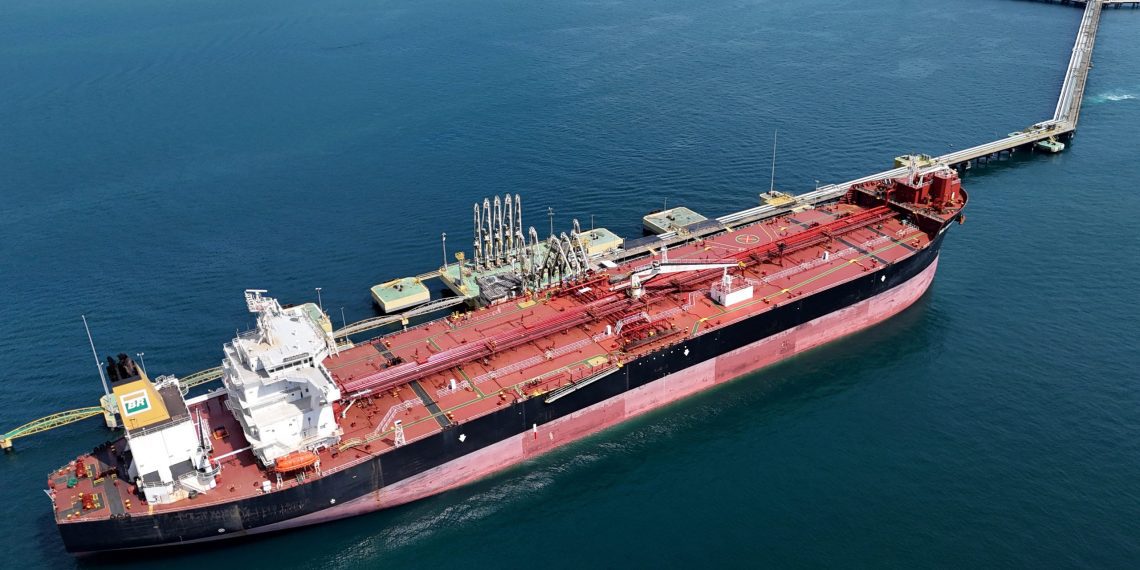Global oil shipping costs are skyrocketing as the U.S. expands sanctions targeting Russia’s oil industry, sending traders scrambling for unsanctioned tankers to transport crude to major markets like China and India. The clampdown on shadow fleet vessels—tankers used to bypass Western restrictions—has tightened global tanker availability and driven freight rates to their highest levels in months.
A Sanctioned Shadow Fleet and Tightening Supply
The U.S. sanctions, aimed at curbing Russia’s oil revenue amid its ongoing war in Ukraine, have placed new pressure on a fleet of roughly 669 tankers engaged in transporting oil from sanctioned nations, including Russia, Iran, and Venezuela. Lloyd’s List Intelligence estimates that about 35% of these shadow fleet vessels are now affected by U.S., EU, or UK sanctions.
The sanctions have disrupted the flow of cheap Russian crude to China and India, forcing refiners in both countries to seek alternative sources. Major Chinese refiners, including Sinopec’s trading arm Unipec, have shifted to securing Middle Eastern, African, and European crudes to fill the gap.
Freight Rates Surge Amid New Demand
The demand for unsanctioned vessels has sent freight rates soaring across key shipping routes. On the Middle East to China route, rates for Very Large Crude Carriers (VLCCs), capable of carrying 2 million barrels of crude, jumped 39% since Friday to $37,800 per day—marking the highest levels since October. Rates for shipping crude from the U.S. Gulf to China have also risen, now costing $6.82 million per voyage, up $360,000 from last week.
Aframax-sized tankers, typically used for shorter routes, saw even more dramatic increases. Freight for ESPO blend crude from Russia’s Pacific Kozmino port to North China more than doubled to $3.5 million per voyage as limited availability led shipowners to demand hefty premiums.
China and India Adjust to New Realities
Unipec has rapidly adjusted its sourcing strategy, booking eight tankers since Friday to transport Middle Eastern crude. The company has also secured several cargoes from Europe and Africa, including:
- Norwegian Johan Sverdrup crude
- Senegal’s Sangomar crude
- Ghana’s Ten Blend
- Angolan Djeno crude
Other major Chinese buyers, including PetroChina and Rongsheng, have also pivoted to Middle Eastern oil, tightening availability in non-sanctioned freight markets.
Middle East Crude Benchmarks Hit New Highs
The scramble for Middle Eastern oil has pushed crude benchmarks like Dubai, Oman, and Murban to their highest premiums in over a year, trading at nearly $4 a barrel above Dubai quotes. Analysts anticipate further tightening as more vessels are pulled into shadow fleet operations, leaving fewer available for non-sanctioned routes.
Bottlenecks in China and Future Implications
Sanctioned tankers now face logistical challenges in China, with several stranded off Shandong province due to a local ban on unloading oil from newly sanctioned vessels. According to Vortexa, over 85% of Russian crude deliveries to Shandong have been conducted by these tankers, exacerbating supply chain disruptions.
Analysts expect the sanctions to further complicate global oil logistics. “We expect new ships will be pulled into the shadow fleet over the coming months, tightening supply in the non-sanctioned freight market,” noted Kpler analysts.
The Road Ahead
As traders and refiners grapple with rising costs and logistical hurdles, the global oil shipping market faces a period of heightened volatility. The U.S.’s crackdown on the shadow fleet is reshaping trade flows, pushing freight rates to new highs, and creating ripple effects that could redefine crude oil transport for months to come.









